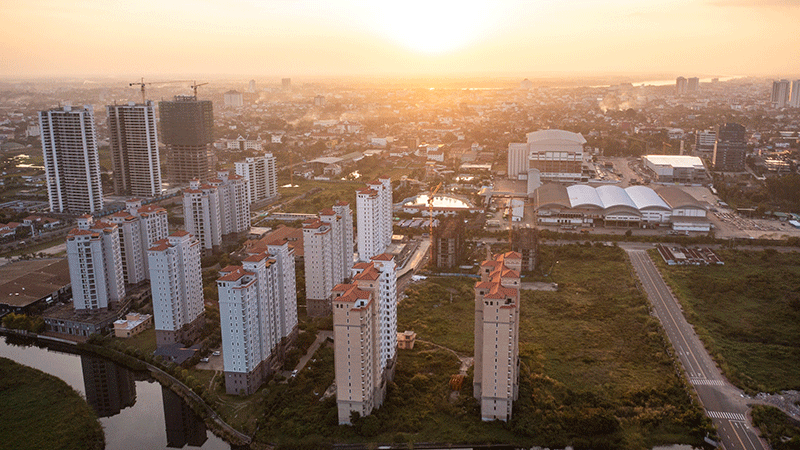 |
| The government says the economy is gradually revitalising and continues to grow. (File Photo Phoonsab Thevongsa) |
Five-year average growth exceeds target at 4.24 percent despite challenges, govt says
Laos is expected to record average annual growth of 4.24 percent during the 2021-2025 period, surpassing the target of 4 percent despite multiple challenges, the government has said.
Implementation of the 9th National Socio-Economic Development Plan for 2021-2025 has faced numerous challenges, including domestic financial and economic difficulties, the lingering impacts of the Covid-19 pandemic, natural disasters, and global turbulence.
Deputy Minister of Finance Ms Phonvanh Outhavong told a seminar held in Vientiane last week that infrastructure development, services, agriculture, and mineral production remain the key drivers of growth.
She highlighted the Laos-China Railway and the establishment of three dry ports — in Vientiane and the provinces of Savannakhet and Champassak — as outstanding infrastructure achievements that have strengthened regional connectivity and boosted trade and logistics services.
In terms of production, the output of food, animal feed and fertiliser has risen significantly, helping reduce imports. Meanwhile, the value of mineral production surged to 169,488 billion kip, exceeding the plan by about 202 percent. All these have boosted foreign exchange reserves.
On the fiscal side, improved revenue collection through the modernisation of tax and customs systems has helped reduce the budget deficit and enhance public spending efficiency.
“Measures have been accelerated to service public debt, resulting in the debt declining from 112 percent of GDP in 2022 to 94 percent in 2024,” Ms Phonvanh told participants.
The seminar reviewed the implementation of the current five-year plan, assessed progress under the national agenda designed to address financial and economic difficulties, and discussed the draft 10th five-year development plan for 2026-2030.
According to Ms Phonvanh, tangible progress has been made in poverty reduction, with the proportion of people living below the poverty line dropping from 18.3 percent in 2019 to 15 percent in 2025.
Efforts to promote good governance have also gained traction through structural reforms.
The number of ministries has been reduced from 19 to 15, central departments from 158 to 124, and provincial departments from 574 to 502. In addition, 14 new one-stop service centres have been established over the past five years, bringing the total nationwide to 75.
Despite these advances, Ms Phonvanh noted that the country continues to face challenges.
Although growth has been maintained at a moderate pace, its quality and sustainability remain limited, as much of the expansion is still driven by unprocessed natural resources with low value-added and limited job creation.
“While the economy has expanded, people’s real incomes remain low,” Ms Phonvanh said, adding that commercial production and productivity levels remain insufficient and undiversified.
Inflation, though declining, remains high, as does the currency depreciation, which has weakened purchasing power.
Average inflation during the five-year period is projected at 17.81 percent, well above the target of less than 6 percent, while the kip depreciation is expected to average 15.15 percent, exceeding the target range of ±5 percent.
Ms Phonvanh also pointed out issues to be addressed to streamline the investment approval process and speed up the cross-border movement of goods, which continues to be unacceptably slow in many cases.
The rising dropout rate in primary and lower secondary schools, the ongoing shortage of teachers, and increasing migration of Lao workers abroad, which is worsening the domestic labour shortage, are all shortcomings that require decisive action.
On the environmental front, the government’s report noted that mineral excavation projects, while contributing to growth, have caused negative environmental impacts.
Despite these difficulties, Ms Phonvanh expressed optimism about the overall economic outlook.
“The economy is gradually revitalising and continues to grow,” she said. “Importantly, the country’s economy is not sliding into crisis.”
By Souksakhone Vaenkeo
(Latest Update October 21, 2025)
|


